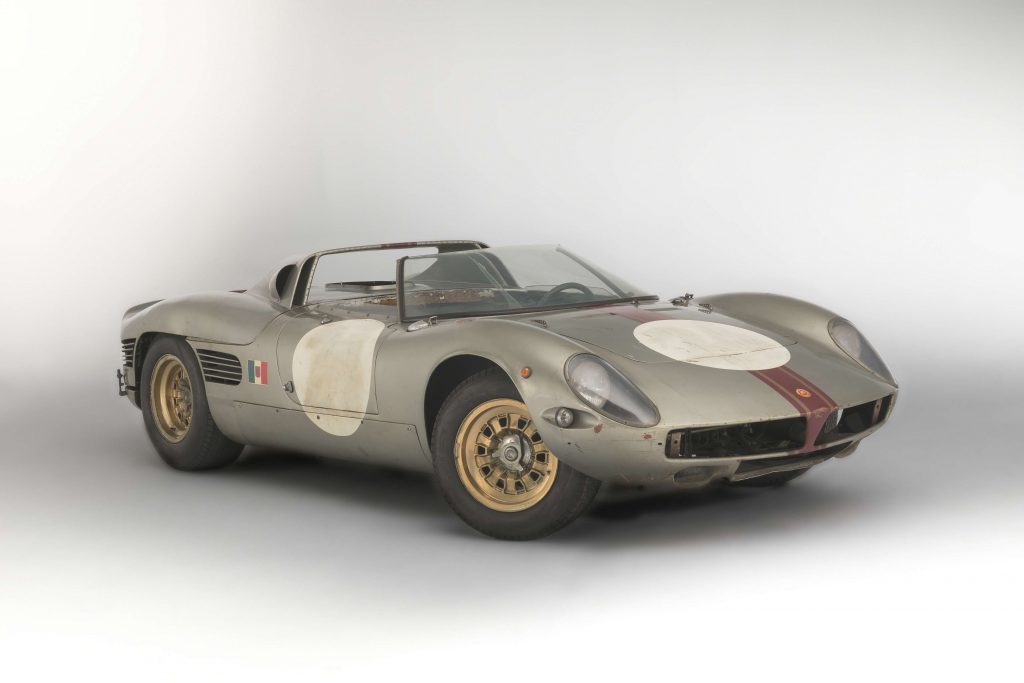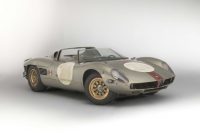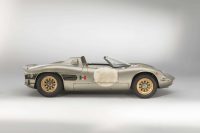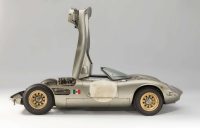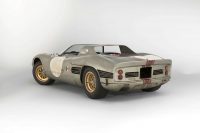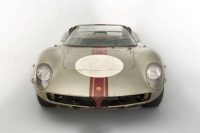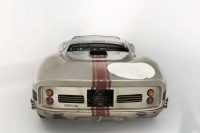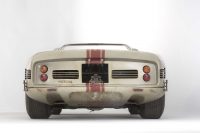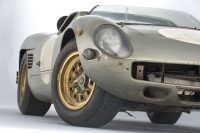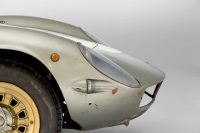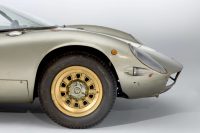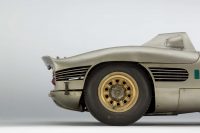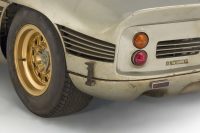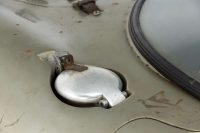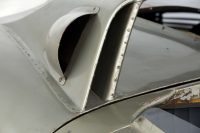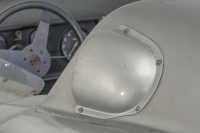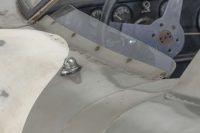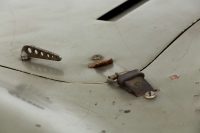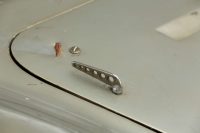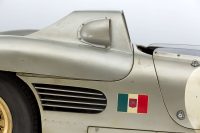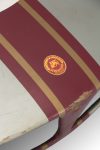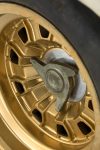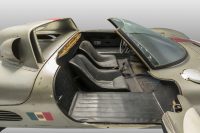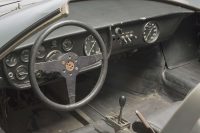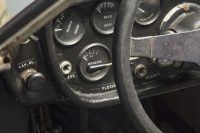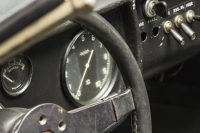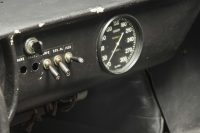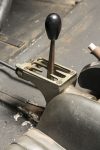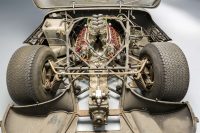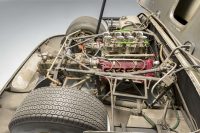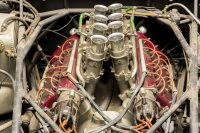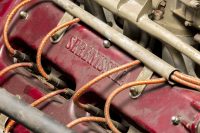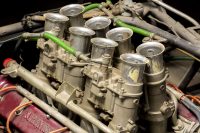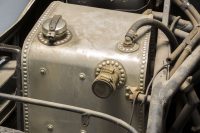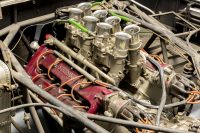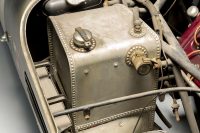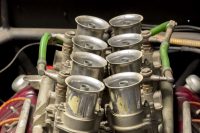Serenissima Spyder – 1966
Marca : Serenissima
Modello : Spider
Versione :
Anno : 1966
Telaio N. : 005
Esemplari prodotti : 2
Designer : Francesco Salamone
Carrozzeria : fantuzzi
Motore : 8 cilindri a V di 90°
Cilindrata : 2.996 cc
Distribuzione : DOHC
Valvole Cilindro : 2
Alimentazione : 4 carb.Weber 42 IDF2
Potenza : 307 CV a 8.500 giri/min
Top speed Km/h : —
Auction results
2019 – Artcurial – Parigi – 4.218.800 €
This car corresponds to one of two spyders built on the base of the first 308 V berlinetta, and is the only one to survive. Designed with a tubular frame chassis, it was fitted with an engine developed by alberto massimino : a 3.5-litre twin overhead-cam V8 at 90° with twin-spark ignition, four twin-choke Weber 40 DCOE carburettors and a dry sump. The gearbox, in characteristically high, narrow form, was also built by Massimino. Girling disc brakes were fitted with 15-inch Campagnolo wheels. The aluminium body, built in the Fantuzzi workshops, bears a resemblance to the ferrari 250 LM. It had a fuel capacity of 119 litres and weighed 985 kg.
This car first appeared in ” road-going ” form, with bumpers and wire wheels. It was then race-prepared and entered, in the prototype category, for the 1966 Le Mans 24 Hours, driven by Jean-Claude Sauer and Jean de Mortemart. Certain books have claimed it was entered by the ” Scuderia San Marco “, but this had nothing to do with the Scuderia Serenissima, and is not correct.
The weight record book, with the car, is worth studying. It shows, for example, a fine of 100 francs for failing to present on time for weighing ! Further it notes : “missing extinguisher, lead-sealed oil tank, 2 lead-sealed breathers”, all faults rectified before the start of the race. It also notes a limit of 500 litres of fuel for practice and 2500 litres for the race, giving a sense of the rigorous demands of this prestigious event.
On 18 June 1966, one of 55 cars entered, the Serenissima n°24 lined up before the crowded stands. This was one of the most iconic Le Mans 24 Hour races in history, when the rivalry between Ford and Ferrari was at its height. The previous year, the Italian marque had secured victory for the ninth time. For 1966, Ford had deployed considerable resources. No less than fifteen official and private GT40s were entered. Not unusually at Le Mans, given the demanding nature of the race, there were numerous retirements and just 15 cars were classified at the finish. Of these, three Ford GT40s took the three podium places, putting an end to Italian domination. The Serenissima was one of 40 cars that retired, after the transmission broke in the fifth hour, sealing its fate.
Giovanni Volpi recalls: “We took the 308 V berlinetta to the test session in April, but it stayed in Italy after that. In June, we also had the Jungla berlinetta with us, but that car didn't take part in the race. ” This spyder is therefore the only Serenissima to ever have taken part in the Le Mans 24 Hours. ” I remember, ” Count Volpi continued, ” that Jean-Claude Sauer stopped at one point to help get a driver out of a damaged car. He worked for Paris-Match. ”
Today, the car is presented in strictly original condition, looking as if it is has not been touched since returning to the pits after taking part at Le Mans. The aluminium bodywork bears signs of the passing years, but has not been altered. It has its original paint, with central red stripe, the team decals and all the accessories visible in period photos, such as the small lights used to illuminate the numbers. The cockpit has two bucket seats and a dashboard with a full set of instruments, including a speedometer graduated to 300 km/h. The windscreen has a slight split.
The car is not running, and requires work before it can be driven. However, it is incredible to be in the presence of a car that has not been altered in any way since taking part in Le Mans 24 Hours, over 50 years ago. What makes this even more special is that, with its unique engine, this Serenissima has remained until now in the hands of the person that built it, Count Giovanni Volpi.
